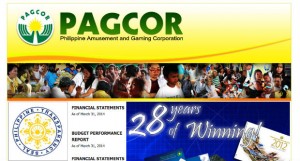- Cultural divergence and the inability of the elite to explain the Asean integration’s benefits hamper the stakeholders from fully making the transition.
- Competing globally is still a major challenge for the Asean nations.
- The Philippines should exploit its dominance in the BPO industry and the potential of its agricultural sector.
MANILA, Philippines – If the United States is a reluctant superpower, then the Association of Southeast Asian Nations (Asean) is a reluctant economic bloc, said a panelist in this year’s Asian Business Conference “2015 Approaching.”
Paulius Kuncinas, Asia regional editor of the Oxford Business Group on June 26 said the Asean is “a very efficient and very ambitious trading bloc but it somehow got stuck in the path of reaching a full economic integration.”
The research economist and writer said this is because the idea of the Asean integration, which seeks to create a single market and production base through the free flow of goods, services and finances by 2015, has yet to become popular.
Divergence
Kuncinas said two factors hampering the transition are the divergence of cultures a major factor in the shift and the inability of the “elite” to sell or explain the benefits of the integration to other stakeholders.
Nalinee Taveesin, former trade representative and minister of Thailand, said the monetary union of Asean nations is an issue that is still far from being resolved “because of the development ranges that we have.”
“Different economies in the Asean have different economy sizes and GDP (gross domestic product),” said Diosadado Banatao, founder and managing partner of Tallwood Venture Capital.
Cecilia Reyes, chief investment officer of Zurich Insurance Group said that it is difficult to imagine how integration could happen in a region that includes the mature economy of Singapore and least developed countries like Laos and Myanmar.
Nevertheless, she said it is achievable.
“This diversity could be an advantage for the region,” Reyes said, adding that the countries could bank on each of their strengths.
Laurent Jacque, professor of international finance and banking at the The Fletcher School in Tufts University, was also optimistic, saying great benefits await those who are willing to push forward.
However, “There is a lot of work that goes in coordination to harmonization to integration,” he said.
He also agreed with Ralph Sorenson, director of Whole Foods Market and professor at the College of Business and Administration at the University of Colorado, who pointed out that while people want a level playing field, there is a need to maintain cultural diversity.
“You don’t all want to become alike from a cultural point of view. How do we preserve each of these countries’ culture?” Sorenson said during the plenary session held at Makati Shangri-La.
Jacque added that national identities should not melt away as Southeast Asian countries integrate their economies.
Comparative advantage
But the bigger challenge faced by Singapore, Thailand, Philippines, Vietnam, Malaysia, Indonesia, Myanmar, Cambodia, Brunei and Laos, is how they can compete in a global market.
“What happens if we cannot do it, if we cannot compete, we just invited the rest of the world to use us as a 600M population market,”
All of the panelists said each of the Asean member states should come up with their own flagship products or services.
“The countries that trade with each other don’t fight each other. I would encourage each of the countries to think what their comparative advantages are going to be,” Sorenson said.
He enumerated the strengths of each of the 5 Asean countries: Indonesia with rich natural resources such as natural gas and textile, Thailand with automobile and assembly, Singapore with banking, Malaysia with rubber and the Philippines with business process outsourcing.
The professor, however, warned the Philippines to look after its agriculture sector which he described as “to a certain extent endangered.”
Sorenson said it would be difficult for such industries to compete in a common market because of the lower cost and prices of products from the other countries.
Manuel Salak III, head of clients and corporate finance of Asia ING Bank, said the problem is that people often look at the Asean integration as an opportunity for multinationals to enter the market and benefit from it but small and medium enterprises (SMEs) are also important players.
Reyes argued that “SMEs form the backbone of the economy of the Asean region.”
“Ninety-six percent of enterprises in the region are SMEs. They contribute 20 percent to 50 percent of the GDP of the region,” she said.
Because of this, a lot of support must be given in the form of trading and development.
They should “embrace the opportunities of the common market rather than seeing it as a threat,” Reyes said.
Salak said banks could work together to perhaps provide SMEs with cross-border guarantees allowing them to expand outside their country.
In agreement with most of the panelists, he said there needs to be an overseeing regional body that will support the financial goals of the integration.
In the end, Salak said that while Asean is still “a little far off from a total integrated community,” the stakeholders and the rest of the world are “seeing pockets of success.”
The Asean integration is an initiative of the Asean member states in their bid to reduce disparity in the region.
The Initiative for Asean Integration was first launched in 2000 with the end goal of creating an Asean Economic Community (AEC) by 2015.
During the World Economic Forum (WEF), Asean trade ministers said the region is nearing removing all tariff barriers.
Other aspects of the AEC include free flow of labor and talents and connectivity in terms of macroeconomic and financial policies, infrastructure and communications and regional sourcing.
RELATED STORIES
BDO Exec doubtful if PH banks ready for Asean integration in 2015
Entrepreneurs need to step up with Asean economic integration in 2015
